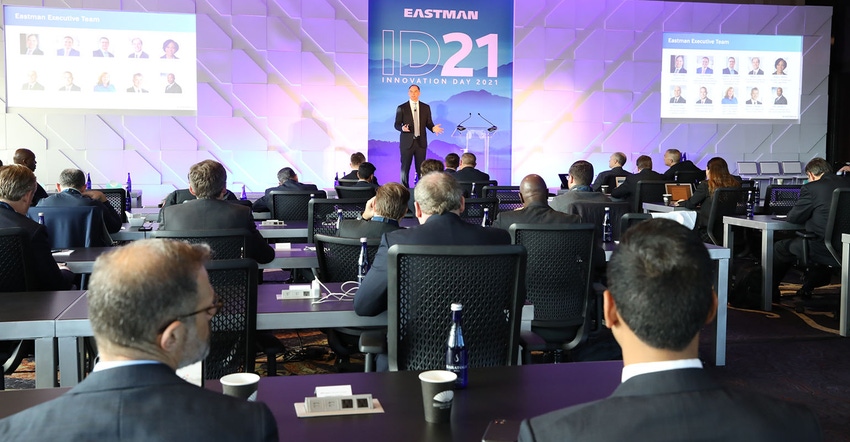The company’s molecular recycling capabilities are providing solutions for the plastic waste and climate crises while creating a new vector of growth, said CEO Mark Costa during Eastman’s 2021 Innovation Day.
December 8, 2021

While some in the plastics industry wring their hands as they ponder the disruptive potential of a shift to the circular economy for their business, Eastman welcomes the transformation. During its virtual and in-person 2021 Innovation Day, the specialty materials company touted its innovation-driven growth model and focus on creating value from disruptive macro trends while leading the charge on sustainability and environmental, social, and governance principles. "One area in particular that we are very excited about is our leadership position in the circular economy,” said Chair and CEO Mark Costa. “Through our competitively advantaged molecular recycling capabilities, we are providing solutions for the plastic waste and climate crises while also creating a new vector of growth that has the potential to deliver greater than $450 million of adjusted EBITDA by 2026."
Positing that we are in a three-pronged global crisis — a 10-billion strong emerging middle class, climate change, and plastic waste — Costa explained how Eastman’s growth strategy is tied to innovation that addresses these challenges. Its materials used in the medical sector respond to demands from the burgeoning middle class for quality healthcare, but the biggest opportunity for Eastman is in sustainability, which has a positive impact both on the climate and waste reduction. More than $2 billion in new business revenue for the company between 2018 and 2022 is tied to innovation, and 100% of top innovation programs are driven by sustainability trends, said Costa. Starting in 2023, the circular economy is expected to account for substantial growth, he added.
Eastman is currently building the world’s largest molecular recycling plant at its Kingsport, TN, headquarters. Eastman will apply the methanolysis process to break down polyester into its monomer building blocks, which are used to produce monoethylene glycol and dimethyl terephthalate intermediates that Eastman will use to produce new polymers. “It’s a process we know well at Eastman, because we have more than 30 years of experience with it,” Costa told PlasticsToday at a breakout session following the Innovation Day presentations. “Methanolysis efficiently unzips polyester into its monomers, purifies them, and through our existing assets remakes them into polymer. We are scaling up the technology, and the plant will be online by the end of 2022,” he added.
Two other molecular recycling projects are in the planning stages, one for the United States and the other for Europe. Because of the substantial capital investment those projects entail, Costa said that Eastman first wants to nail down the terms and conditions for uptake and supply security before moving forward. If those terms are met, those plants could be online as soon as 2025.
Costa also noted that the circular economy is creating new growth opportunities for its biodegradable cellulosic biopolymers. End products, including apparel and eating utensils, that contain approximately 60% biopolymer content and 40% recycled plastic waste can lower greenhouse gas emissions by 20 to 50%, according to Eastman. This segment alone has the potential to generate more than $200 million of EBITDA by 2027.
The bottom line for Eastman is an expected $5 billion in operating cash flow over the next three years and an additional $1 billion of cash from earnings growth by 2024. It is projecting a compound annual growth rate between 8 and 12% of adjusted earnings per share over the next three years, and a return on invested capital between 12 and 15%.
Costa stressed that capital allocation will remain disciplined, a practice that has served the company well over the past few years. The four allocation pillars are investments in organic growth, circular economy projects, and bolt-on mergers and acquisitions, along with a significant return to shareholders.
About the Author(s)
You May Also Like




